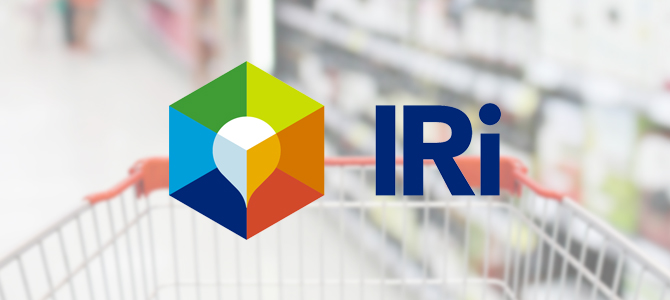
U.S. beer volume sales were roughly flat in 2017, according to retail data provider IRI Worldwide.
The market research firm, which tracks category-wide sales trends at off-premise retailers, reported that total U.S. beer dollar sales topped $34 billion in the firm’s multi-outlet and convenience (MULC) universe of stores (grocery, drug, club, dollar, mass-merchandiser and military). Through December 31, U.S. beer volume sales decreased 0.4 percent while total beer dollar sales increased 1.2 percent.
Dollar sales of domestic premium brands (Budweiser, Bud Light, Miller Lite, Coors Light and others), declined 2.9 percent (more than $398 million) to more than $13 billion while volume sales dipped 3.8 percent.
However, three segments — imports, craft beer and domestic super premiums — grew last year. Dollar sales of imported beer, the second largest segment, increased 8.4 percent to more than $6.5 billion.
Craft dollar sales increased 5.6 percent, to more than $4 billion, while volume sales increased 3.6 percent in 2017. And dollar sales of domestic super premiums — such as Michelob Ultra — increased 11.3 percent, to more than $2.5 billion, while volume sales were up 9.4 percent.
Meanwhile, sales of domestic sub-premium beer, flavored malt beverages, cider and non-alcoholic beer were all in decline. Dollars sales for those categories dipped 1.1 percent, 3.5 percent, 3.1 percent, and 0.7 percent, respectively.
According to IRI, the top selling “craft” brand in 2017 was Molson Coors-owned Blue Moon Belgian White, with off-premise dollar sales topping $280 million. Blue Moon volume sales also grew 5.3 percent last year.
Meanwhile, dollar sales of Sierra Nevada Pale Ale, the second largest craft brand, declined 8.1 percent (more than $10 million).
Volume sales of several other notable core craft brands also struggled in 2017. Among them, Sierra Nevada Pale Ale (-9.1 percent) and Torpedo Extra IPA (-5.5 percent); New Belgium Fat Tire Amber Ale (-12.5 percent); Shock Top (-7.5 percent); and Boston Beer Company’s Samuel Adams Boston Lager (-11.8 percent) and Rebel IPA (-23.1 percent).

Sales of Samuel Adams and Sierra Nevada seasonal SKUs also suffered sharp double-digit declines, down 21.4 percent and 18.3 percent, respectively.
Despite losing $15 million in off-premise sales, Boston Beer still finished 2017 as the top-selling craft beer manufacturer, with dollar sales in excess of $757 million.
Four other top craft producers posted declines in dollar sales: North American Breweries (-6.9 percent), the Gambrinus Company (-0.5 percent), Craft Brew Alliance (-5.4 percent) and Deschutes Brewery (-5.6 percent).
Meanwhile, three large craft beer suppliers were able to achieve single-digit growth in 2017, including Yuengling (3.1 percent), New Belgium (6.2 percent) and Lagunitas (9.4 percent).

Michigan’s Founders Brewing Company continued to post the strongest growth among IRI’s top 25 vendors in 2017, with dollars sales up 42.6 percent and volume sales up 51.8 percent. Those gains were largely due to strong sales of All Day IPA, which grew 50.3 percent on the year.
Several regional craft breweries also achieved strong double-digit dollar sales growth in 2017, including Bell’s Brewery (18.6 percent), Stone Brewing (14.5 percent), Sweetwater Brewing (15.9 percent), Firestone Walker (16.2 percent), Dogfish Head (14.7 percent), New Glarus (11 percent) and Artisanal Brewing Ventures (Southern Tier and Victory Brewing, which combined for 16.1 percent growth).
Several of those breweries’ most popular offerings also posted strong double-digit case sales growth, including Firestone Walker 805 blonde ale (29.8 percent), Bell’s Two Hearted Ale (25.5 percent), New Belgium Ranger IPA (39.1 percent), Sweetwater 420 Pale Ale (14.2 percent), New Belgium Rampant Imperial IPA (89 percent) and Deschutes Fresh Squeezed IPA (15.1 percent).

Meanwhile, IRI-tracked dollar sales for the world’s largest brewer, Anheuser-Busch InBev, declined more than $187 million, to $14.9 billion, in 2017. A-B’s dollar sales declined 1.2 percent while volume sales dipped 2.2 percent.
Lagging sales of A-B’s two biggest brands, Bud Light and Budweiser, were the primary culprit: Volume sales of Bud Light, the top-selling beer in the U.S., with $5.6 billion in dollar sales, declined 5.3 percent. Volume sales of Budweiser, meanwhile, declined 5.7 percent.
Michelob Ultra, A-B’s low-carb offering, fared much better in 2017, however. Dollar sales grew 23.6 percent, to $1.6 billion. And dollar sales for A-B owned craft brands Goose Island IPA and Elysian Space Dust IPA increased by 29.2 percent and 224.4 percent, respectively.
Portfolio-wide dollar sales for A-B’s largest U.S. competitor, MillerCoors, were down 1.4 percent, to more than $7.7 billion. Volume sales for MillerCoors’ flagship light lagers, Coors Light and Miller Lite, declined 2.6 and 1.5 percent, respectively.
Pabst Brewing Company’s portfolio of beers also struggled in 2017, as company-wide dollar sales decreased 9 percent, to $564 million, IRI reported.
Among the top five beer companies, Constellation Brands, which produces and distributes the popular Modelo and Corona Mexican import labels, as well as beers from Ballast Point and Funky Buddha, was the only beer manufacturer to post double-digit growth in dollar sales (14.1 percent) and volume sales (12.5 percent). Constellation finished 2017 with more than $3.9 billion in off-premise retail beer sales.
